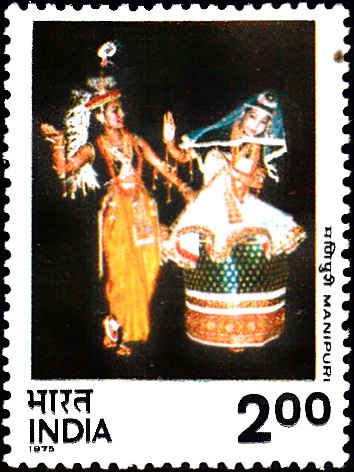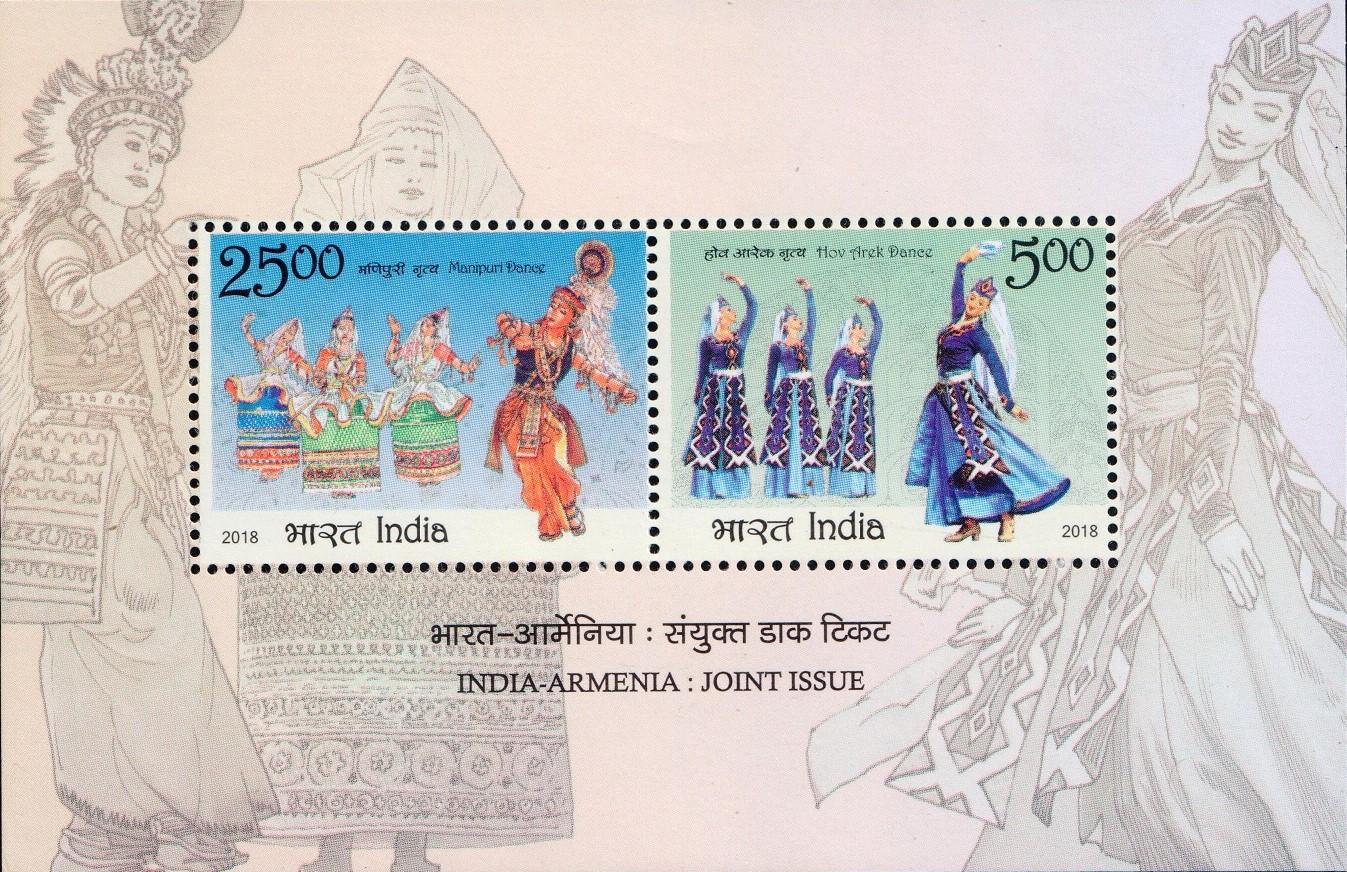
Cultural Heritage of Western Odisha
Complete set of 6 nos. of postage stamps on Cultural Heritage of Western Odisha :






 Issued by India
Issued by India
Issued on Feb 20, 2024
Issued for : Department of Posts is pleased to issue a set of commemorative postage stamps on Cultural Heritage of Western Odisha and appreciates its rich culture and heritage positively affecting the beliefs, traditions and lifestyle of people.
Credits :
Stamp/FDC/Brochure/Cancellation Cachet : Sh. Sankha Samanta
Type : Miniature Sheet, Mint Condition
Colour : Multi Colour
Denomination : 500 Paise (6)
Miniature Sheets Printed : 111000
Printing Process : Wet Offset
Printer : Security Printing Press, Hyderabad
About :
- Odisha is a confluence of the Aryan, Dravidian and Adivasi cultures. Most festivals, art and cultural traditions in the state bring out some parts of these cultures. Sambalpur serves as the gateway to the enchanting western zone of Odisha. It is the epicentre of a very high profile and rich culture. Its art and culture is a unique proposition of dance, music, handicraft, beliefs, social values, traditional practices etc.
- Sambalpuri Bandha (Ikat) work or Sambalpuri work contains the warp and the weft tie-dyed before weaving. This is produced in Sambalpur, Balangir, Bargarh, Boudh and Sonepur Districts of Odisha. The traditional garment has the motifs like Sankha (conch-shell), Chakra (wheel), Phula (flower). These have deep symbolism with the native Odia colours i.e., red, black and white representing Odia culture along with the colour of the face of Mahaprabhu Shree Jagannatha.
- The traditional craftsmanship of ‘Bandhakala’, the tie-dye art reflected in their intricate weaves, also known as ‘Sambalpuri Ikat’. In this technique, the threads are first tie-dyed and later woven into a fabric, with the entire process taking as long as many weeks. The Ikat sarees gained popularity outside Odisha in the 1980-90s. The yarns or set of yarns so produced are called ‘Bandha’. This art is believed to have been migrated to Odisha along with Bhulia community who fled Northern India in the year 1192 A.D. The colours consisted mainly of vegetable colours. The Bandha Sarees were known as ‘Bhulia Kapta’.
- Sambalpuri fabric owes a great deal to the pioneering efforts of Shri Radhashyam Meher, who brought about a radical movement in the skills of the craftsmen and the quality of the products. Other master craftsmen who contributed to the development of Sambalpuri Textiles were Padma Shri Kailash Chandra Meher, Padma Shri Kunja Bihari Meher, Padma Shri Chaturbhuja Meher and Padma Shri Krutarth Acharya along with Handloom Technologist Shri Ramakrushna Meher (National Awardee). Bandha craftsmen are also masters of the ‘extra warp’ and ‘extra weft’ style of designing which can be seen in almost all forms of Bandha Textiles. Radhashyam Meher also produced Khadi textiles using Bandha Art. Shri Meher has established his propriety at Sambalpur for the research, production and marketing of Sambalpuri Textiles.
- Acknowledging Radhashyam Meher’s unparalleled contributions to the growth and popularity of Bandha art, the Ministry of Textiles of Government of India has sponsored Textile Exhibition coinciding with his birth anniversary on 20th November and organised by the Director of Textiles of Government Of Odisha. Sagarpalli is a large village hosting around 500 Bhulias (weaver families). This is one of the largest weaving villages in Sonepur district, a bastion of Sambalpuri sarees. Other areas affluent with Handloom Weavers are Barpalli, Tarava, Bijepur, Patnagarh and Bargarh.
- Nuakhai festival has been a tradition since 12th century A.D. People of Western Odisha, spreading across Sambalpur, Balangir, Bargarh, Sundargarh, Kalahandi and adjoining areas of Simdega in Jharkhand celebrate this festival with great joy and happiness. Western Odisha celebrates this agricultural festival which is known as ‘Nuakhai’. The importance of agriculture is deeply embedded in the economic development of this State.
- This is the annual harvest festival in Odisha. Nuakhai is observed to welcome the newly harvested rice of the season. According to the Odia Hindu Calendar, it is observed on Panchami Tithi of the lunar fortnight of the month of Bhadrapada or Bhadraba, the day after Ganesh Chaturthi Festival. The objective of this festival is to celebrate social bonding and strong family ties. The festival has its origin from the Vedic period where the Rishis used to discuss Panchyajna. The Pralambana Yajna is meant for cutting new crops and offering prayers to mother Goddess. People visit their native place during the festival. Nuakhai festival has nine sets of rituals that begin from Behrana to concluding with the Juhar Bhet. This day is considered as auspicious and one of the most important days marked in the calendar of the Western Odisha. Goddess Samalei, the presiding deity of the land is worshipped and is offered food prepared out of new crop or Nabanna.
- Sitala Sasthi Yatra is a sacred Hindu Festival celebrated in Western Odisha in which the divine couple’s marriage is solemnised. Sitala Sasthi is observed on the sixth day of the Jyestha month during Shukla Pakshya. People observing this festival believe that Lord Shiva represents scorching heat of summer while Goddess Parvati signifies the first rain. This holy/sacred wedding is solemnised for a good monsoon.
- The Ministry of Culture of Government of India has accorded National Festival status to Dhanu Yatra in 2014. The Yatra is performed in many places in Western Odisha. The major one of these is the original one at Bargarh. It is about the episodes from birth of Lord Sri Krishna to death of demon king Kansa including Krishna and Balaram’s visit to Mathura to witness the Dhanu Yatra Ceremony of the king Kansa. The interesting fact is that there is no written script used in these enactments. This has become the World’s largest open-air theatre till date.
- Sambalpuri Folk Dance, a dance form owes its origin to the Western part of Odisha, particularly the erstwhile Sambalpur District. This place is known for its sculpturesque Odissi dance form. Deriving its name from the presiding deity of Sambalpur ‘Samalei’, the dance form has a distinct cultural identity of its own. This dance is usually performed during festivals i.e. Dussehra, Nuakhai etc. Accompanied by the rhythm of ‘Panchavadya’ i.e. the 5 local instruments Dhol, Tasha, Nishaan, Jhanjh and Muhuri coupled with the tinkling of Ghungurus, the creative blends of both traditional and modern scintillating movements punctuated with teaming pauses.
- Text : Based on information received from the proponent.
Subscribe
Login
0 Comments







